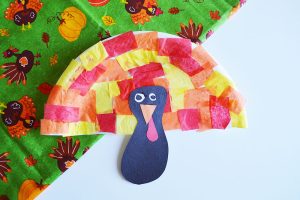|
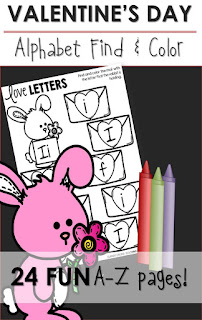
|
| Read the post to find out how to get your 28-page download! |
Valentine’s Day Cards…..Have Fun While Working on Critical Skills!
We are SO excited to welcome our guest bloggers — the amazing therapists (twins, one is a Speech-Language Pathologist and the other is an Occupational Therapist) at
Fine Motor Boot Camp! If you haven’t seen their website, it’s worth the visit….their ideas will shorten your prep time and make your treatment session better –I guarantee it!
Although schools are moving away from celebrating holidays, we still find creating “Valentine’s Day Cards” as a meaningful way to teach young children thoughtfulness, empathy, social and of course fine motor and language skills. As an OT and SLP, our goal is to make activities achievable and successful for ALL children (and parents), no matter their ability level. Every child is an artist and as adults, we need to remind ourselves that, “It’s the process, not the product” when it comes to each child’s creation. Look beyond what you “think it should look like” and embrace what a child creates! We don’t want Valentine’s Day cards to become another stress as to “what my kid can’t do” but, rather what they CAN do. Every child is capable of independence, it’s our job to adapt. Now, as moms, we are also realists and know that schedules are busy, life gets crazy and just when you think you have it all together….some one goes and poops in the tub (true story). So, here are some helpful hints to make Valentine’s Day meaningful, engaging and successful.
Here we go:
1. DO NOT START VALENTINE’S DAY CARDS THE NIGHT BEFORE!!
(Sorry for yelling, but it’s for your own good, lol). As a parent, did you send out holiday cards this year? I send out an average of over 130 a year. As a “neuro-typical” adults, we cannot sign, stuff, seal, stamp and address all these cards in one sitting. Now, imagine you are a 7-year-old child and you have language/ fine motor/ sensory/ visual/ attention/ behavioral/ etc. issues? Think about how hard it would be to complete all of these steps for your 25 classmates. We like to start cards about 3 weeks before. We find that kids are excited to start, then either satiate, fatigue or just get bored of the activity and lose interest after completing only a few cards. Leave the cards and materials out and conquer a few every few days. If you wait until the night before, everyone becomes frustrated and mom/ dad, you have added another task to complete before you can go to bed.
2. Think about going beyond the store-bought pack of cards and make creating cards fun and engaging fine motor, language and cognitive activity.
Children LOVE to create. When you give the child only the store bought pack of cards, they feel tasked with writing their name 25 times and you lose the opportunity to build fine motor and language through play and use of other media/ materials. (We will mention some additional materials to use below).
3. If you love your child’s teacher, DO NOT fill out the “To” section of the card. This makes “card distribution” extremely time consuming and chaotic.
Your child’s teacher has 20 students, each student has 19 cards to give out. If you do the math, that teacher is distributing almost 400 CARDS!!! So, leave the “To” section blank and just have your child sign the card.
Need help with cutting skills? Read our previous blog post and get a free cutting help download!
Materials:
The “Card” – Ideas instead of store bought cards:
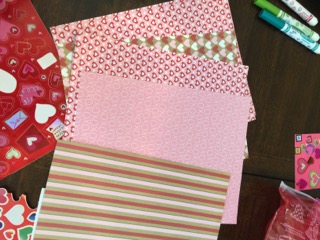 Scrapbook Paper: This paper comes in so many beautiful colors, textures and designs. Your little one will love picking out the different paper at your local craft store (don’t forget your coupons). Build language by talking about the designs, colors, textures, patterns and objects you see on the scrapbook paper. Practice scissor skills by cutting the paper into shapes, strips to make cards. Construction paper is also a great choice and usually readily available in homes/ schools.
Scrapbook Paper: This paper comes in so many beautiful colors, textures and designs. Your little one will love picking out the different paper at your local craft store (don’t forget your coupons). Build language by talking about the designs, colors, textures, patterns and objects you see on the scrapbook paper. Practice scissor skills by cutting the paper into shapes, strips to make cards. Construction paper is also a great choice and usually readily available in homes/ schools.The “Embellishments” – what you can use to decorate those cards:
Catalogs and Circulars: Who didn’t love getting the Sears Holiday Catalog as a kid? Times may have changed, but children still love to look in catalogs and circulars to find candy and toys. Oriental Trading sends catalogs with amazing holiday “visuals” as do the local drug stores in their weekly circulars. Have your child identify Valentine’s Day items, cut those pictures out and glue! If your little one isn’t ready for cutting, have them circle or highlight the items and have the adult cut them out. Build language by sorting the pictures into categories (candy/toys/ cards) and talk about items the “do” and “don’t” belong.
Wrapping Paper: Do you have extra wrapping paper from the holidays or last birthday party? Cut out those decorations or characters to use as embellishments on your cards.
Confetti: Have your child make their own confetti using hole punches, snipped gift ribbon, snipped pieces of paper. Practice that pincer grasp by having your child pick up and glue these tiny pieces on the cards. Practice counting 1:1 correspondence with these pieces or grouping them by colors. Oh, and snipping, narrow strips of ribbon/ paper is an easier early scissor skill. When a child only has to “snip” once to get the desired result, he will feel successful.
Doilies: Awesome and cheap for so many activities….only $1 for ten!
Dollar Spot: We are total suckers for the “Dollar Spot” at Target and other big chain stores. These sections are typically seasonal and have beautiful embellishments for $1.
Stickers: Stickers are cheap, easily found and motivating. Stickers provide a great opportunity to build pincer grasp and finger isolation. If your little one has a hard time peeling the stickers off, take the “backing” off of the sticker sheet. This makes it easier to peel the sticker off. Still too hard? The adult can take the sticker off the sheet and the child can place it on the card. “Puffy” stickers are a little easier for children to do independently.
Rubber Stamps: Seasonal/ holiday rubber stamps can be found for a dollar and are perfect for decorating cards.
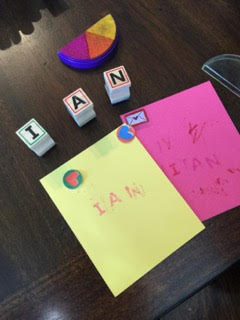 Craft/ Scrapbooking Scissors: Okay, these are not actual “embellishments” but craft scissors, found at craft stores for $1, cut out pictures in beautiful designs (curves, zig-zags, etc) and are extremely motivating for little ones to try.
Craft/ Scrapbooking Scissors: Okay, these are not actual “embellishments” but craft scissors, found at craft stores for $1, cut out pictures in beautiful designs (curves, zig-zags, etc) and are extremely motivating for little ones to try. Pre-Made Cards:
Don’t feel like a “slacker” mom for buying the pre-made cards. These pre-made cards are so exciting for children to pick out and are just plain easier. If you opt for pre-made, here are some ideas:
· Tear the cards apart. Your child can cut out favorite pictures, glue onto paper
· Put stickers/ stamps on them to embellish
· Have your child put the cards in envelopes to work on bilateral hand coordination.
The “Signature”:
Even if your little one is an avid writer, signing his or her name 20-25 times loses its luster. Here are some ideas to adapt your child’s signature:
· Have child trace name
· Print out or write the name on mailing labels/ stickers (the Dollar Tree has 100+ labels for a dollar)
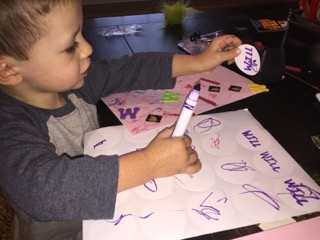 · Use a single letter stamp (found in $1.00 section at Michael’s Craft stores)
· Use a single letter stamp (found in $1.00 section at Michael’s Craft stores)· Child scribbles (then adult writes name)
· Use letter stamps to sequence name
· Sticker with just first initial
· Print your child’s actual picture on the label and put on the card
· Photocopy your child’s signature (if they fatigue easily), then have him snip it out and glue on the card
· Have your little one just write/ stamp the initial letter of his/ her name
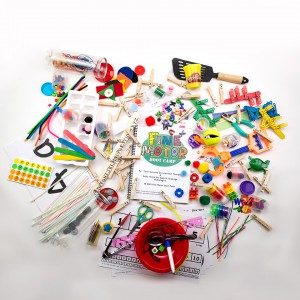 |
| Have you seen this? It’s the entire Fine Motor Boot Camp program! WOW……this will make treatment sessions AMAZING! |
Language Stimulators – “Things to Talk About”:
We love to use the saying, “Talk isn’t cheap….. IT’S FREE!” Talking to your little one is the best thing you can do for your child. Here are some language building ideas to use when you are making those Valentine’s Day cards:
· Don’t “interrogate” your child. Asking too many questions while creating/ playing with your child takes the fun out of the activity. Children are always listening and learning. Try these basic language stimulation strategies:
Extension and Expansion Talk: Expand on what the child says. Use this opportunity to “lengthen” what the child could say. Example:
Child: “Paper.”
Adult: “Look at all the paper choices we have. We can pick red, pink purple or blue. I see you like this paper with the sparkles. Let’s cut that one.”
Self-Talk: Talk about what you are doing.
Adult: “I just picked up the scissors and put them in my hands. Now I’m going to open and close my hand to snip the red paper. I am going to cut the paper in half.”
Parallel Talk: Talk about what the child is doing.
Adult: “Wow, I see you just used your finger to peel of that sticker. The sticker is smooth on one side and very sticky on the other. Great job putting the sticky part down on the paper.”
Social Skills and Perspective Taking:
Valentine’s Day is the perfect opportunity to work on building social skills and perspective taking. Distributing cards to peers allows a wonderful opportunity to work on initiating and greeting classmates because there are multiple opportunities to practice the same skill in the same context (think 20 other students, 20 cards, 20 repetitions). Empathy and perspective taking may seem difficult to teach in little ones, but sitting down as a group or class and talking about “what – if” scenarios of Valentine’s Day creates a realistic situation. Talk about how it would feel to not receive a card from someone or how giving a card makes both students feel.
Send us a picture of your kids’ cards. I love hearing from YOU!

.
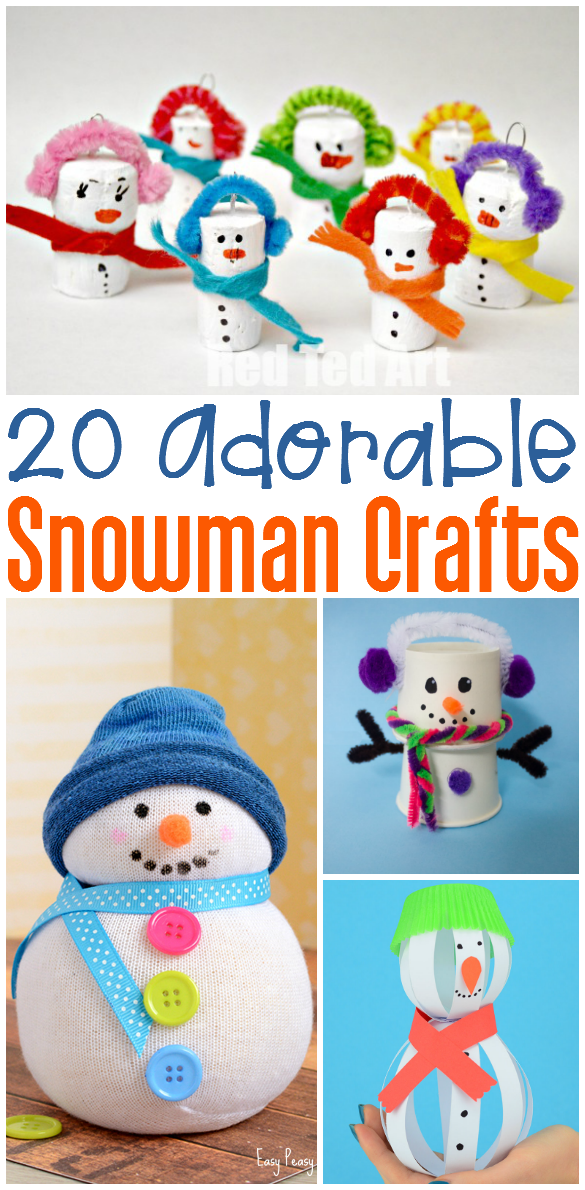
 Scrapbook Paper: This paper comes in so many beautiful colors, textures and designs. Your little one will love picking out the different paper at your local craft store (don’t forget your coupons). Build language by talking about the designs, colors, textures, patterns and objects you see on the scrapbook paper. Practice scissor skills by cutting the paper into shapes, strips to make cards. Construction paper is also a great choice and usually readily available in homes/ schools.
Scrapbook Paper: This paper comes in so many beautiful colors, textures and designs. Your little one will love picking out the different paper at your local craft store (don’t forget your coupons). Build language by talking about the designs, colors, textures, patterns and objects you see on the scrapbook paper. Practice scissor skills by cutting the paper into shapes, strips to make cards. Construction paper is also a great choice and usually readily available in homes/ schools. Craft/ Scrapbooking Scissors: Okay, these are not actual “embellishments” but craft scissors, found at craft stores for $1, cut out pictures in beautiful designs (curves, zig-zags, etc) and are extremely motivating for little ones to try.
Craft/ Scrapbooking Scissors: Okay, these are not actual “embellishments” but craft scissors, found at craft stores for $1, cut out pictures in beautiful designs (curves, zig-zags, etc) and are extremely motivating for little ones to try. 



